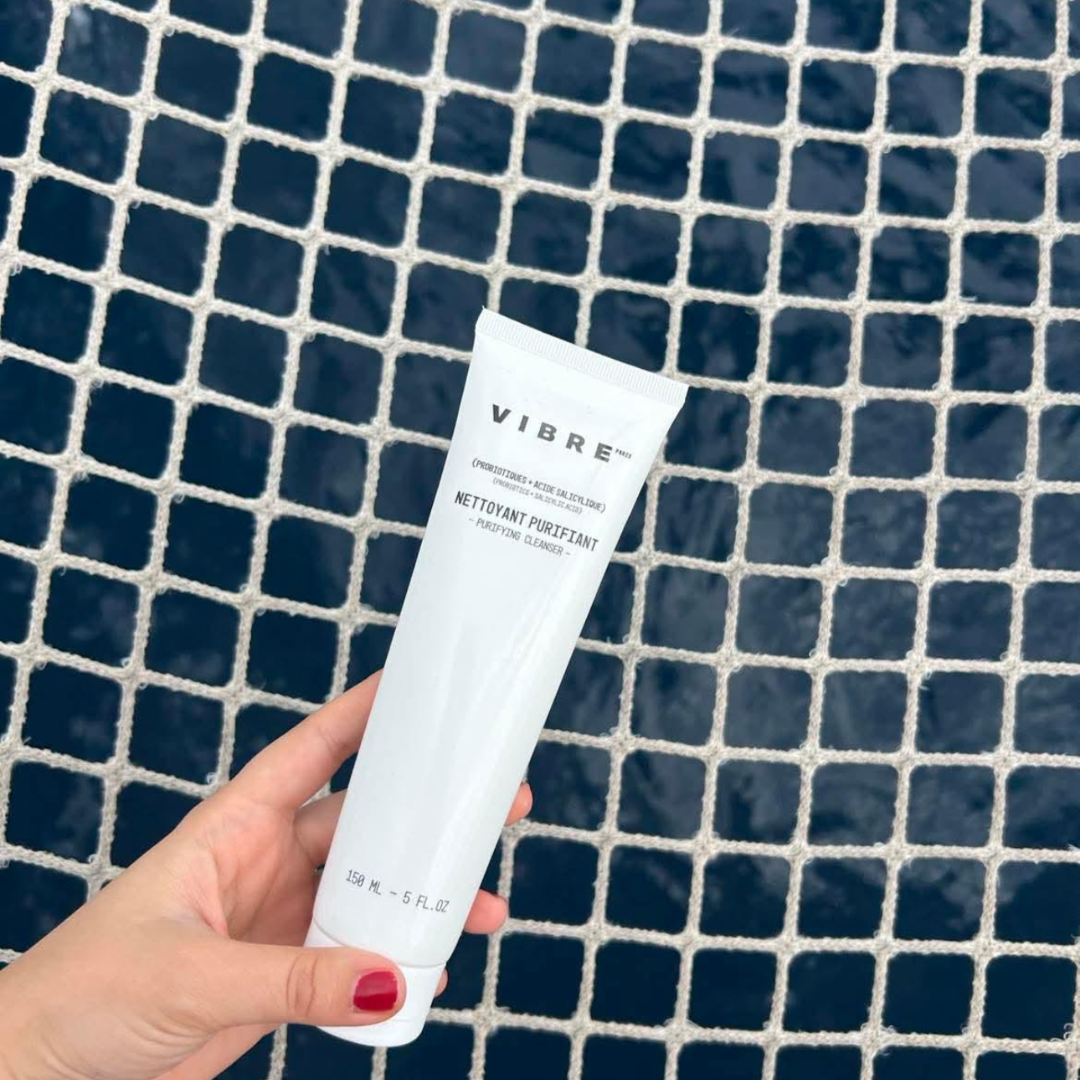
What are the benefits of salicylic acid?
Share
Salicylic acid is one of the most popular cosmetic ingredients in skin care. It is particularly prized for its exfoliating action, anti-inflammatory properties and ability to unclog pores. Although mostly associated with acne treatments, it actually offers a much wider range of benefits, making it an ally in improving skin texture, clarity and overall health.
In this article, we'll explain what salicylic acid is, how it works on the skin, its main benefits, and how to use it and take precautions.
1. What is salicylic acid?
Salicylic acid is a beta-hydroxy acid (BHA), i.e. an oil-soluble acid. Unlike AHAs (alpha-hydroxy acids) like glycolic acid, which are water-soluble and act primarily on the skin's surface, BHAs penetrate inside the pores thanks to their affinity with sebum.
Historically, salicylic acid was extracted from the bark of the willow tree (Salix alba). Today, it is often synthesized in laboratories to guarantee its purity and stability. It is used not only in cosmetics, but also in the medical field, notably to treat warts and calluses.
2. How does salicylic acid work?
Theaction of salicylic acid is based on several complementary mechanisms:
-
Chemical exfoliation: Dissolves the bonds between dead cells on the skin's surface, promoting their elimination.
-
Pore penetration: Thanks to its lipid-solubility, it penetrates deep down to cleanse away excess sebum and impurities.
-
Keratolytic properties: it thins the stratum corneum and improves cell renewal.
-
Anti-inflammatory effect: soothes redness and reduces irritation associated with blemishes.
This global mode of action explains why salicylic acid is recommended for oily, acne-prone or blackhead-prone skin.
3. The main benefits of salicylic acid
a) Fighting acne
One of the major benefits of salicylic acid is its ability to prevent and reduceacne. By unclogging pores and reducing inflammation, it limits the formation of comedones (blackheads and whiteheads) and diminishes pimples already present.

b) Reduction of blackheads and whiteheads
Blackheads are caused by the oxidation of sebum and dead cells accumulated in the pores. Thanks to its deep penetration, salicylic acid dissolves these obstructions and prevents their reappearance.
c) Gentle, even exfoliation
Unlike mechanical scrubs, which can be abrasive, salicylic acid offers a more even, gentle chemical exfoliation, ideal even for sensitive skin, provided you use the right concentration.
d) Improved skin texture
By eliminating dead cells and stimulating cell renewal, salicylic acid helps smooth skin texture, reduce irregularities and give a more radiant complexion.
e) Anti-inflammatory action
Its anti-inflammatory properties make it an ideal ingredient for soothing irritated or reddened skin. This makes it useful not only against acne, but also in certain cases of mild rosacea.
f) Prevention of ingrown hairs
By exfoliating the surface and unclogging hair follicles, salicylic acid reduces the risk of ingrown hairs, especially after waxing or shaving.
4. Forms and uses of salicylic acid
Salicylic acid is present in many cosmetic products, with concentrations generally ranging from 0.5% to 2% for everyday use, and up to 10% or more in certain specific treatments prescribed by a dermatologist.
Standard products :
-
Facial cleansers: for daily use to keep pores clean.

-
Toning lotions: to refine skin texture after cleansing.
-
Targeted serums and gels: to treat imperfections locally.
-
Purifying masks: for in-depth action once or twice a week.
5. Precautions and side effects
Although salicylic acid is effective, it must be used with caution:
-
Overdose: Too high a concentration or too frequent use may cause dryness, redness or excessive scaling.
-
Photosensitization: Although the risk is lower than with other acids, we recommend applying sunscreen in the morning.
-
Contraindications: Avoid in people allergic to aspirin (derived from salicylic acid) and in pregnant women without medical advice.
6. Incorporate salicylic acid into your routine
To benefit from its effects without irritating the skin:
-
Start slowly: 2 to 3 times a week, then increase according to tolerance.
-
Combine with moisturizing: Use a moisturizing cream to offset the drying effect.
-
Combine intelligently: Avoid combining it directly with other powerful exfoliating active ingredients (AHAs, retinol) at first.
7. In a nutshell
Salicylic acid is a versatile ingredient that works on the surface and deep down, offering an effective solution for :
-
Reduce acne and blackheads
-
Improve skin texture and radiance
-
Reduce inflammation and ingrown hairs
Used properly, it becomes a major asset in maintaining clear, smooth, luminous skin.
